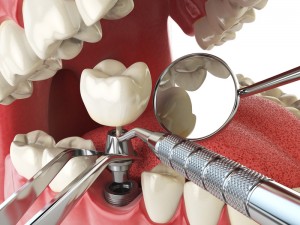Technological advancements have consistently changed virtually every aspect of so many industries. Though it’s only been a few years since 3D printing technology became readily available for research, this revolutionary technology is now leading to even more global improvements.
By the year 2020, the international metal fabrication market is projected to increase by nearly 7%, and 3D printing will most likely play a major role in that growth. Creating and manufacturing a tool once took up to six weeks but now, with 3D printing, the tool can be created within just hours and will be about 50% lighter depending on the material used.
The manufacturing industry has surely benefited by the advent of 3D tech, but another important sector is enjoying these 3D benefits as well: the healthcare and dental sector.
According to Global News Wire, the dental 3D printing market enjoyed massive success in 2017 and is on pace to grow to approximately $9.5 billion by 2027.
During the last year, the total dental printing industry grew by over 35% year-over-year for the second year in a row — resulting in dozens of industry officials predicting that these positive trends will continue over the next decade.
Since there are currently 15 million people in the U.S. with crown and bridge replacements for missing teeth, as well as 3 million individuals with implants, 3D printing could significantly cut down on costs associated with these dental procedures, as well as improving overall convenience and care. And there will clearly be a need for more dental implants, too, as 500,000 more people each year are getting implants.
“3D printing is efficient and saves on dental materials,” said Wang Yungan, chairman of Porimy.
According to 3D Print, Porimy, alongside Bo Li Mai, has created a 3D printer in China that makes dentures much more quickly and is cost effective for dental offices and patients alike.
“The 3D printed zirconia ceramic denture researched and developed by BMI has been highly praised by the authoritative organs of oral rejuvenation in our country and has successfully passed the mechanical inspection and biological inspection of China’s Food and Drug Administration,” said officials for Porimy.
In the U.S., since high-speed 3D printers are becoming increasingly more available, individuals and companies are able to print various products intended for end-use clients rather than outsourcing any steps in the production process or working with dozens of other organizations. Cosmetic dentistry products like Invisalign, for example, can now be created with much more efficiency and accuracy thanks to 3D printing technology.
It should be stated, however, that some cheap 3D printers don’t consistently produce high quality products, so customers should carefully monitor every single printed part for any industry, especially the dental and healthcare sector.
With EnvisionTEC’s FDA-aproved 3D-printed material for replicating pink gums (E-Denture) and teeth (E-Dent), the U.S. has clearly accepted the oncoming of the 3D technology within the dental sector.






